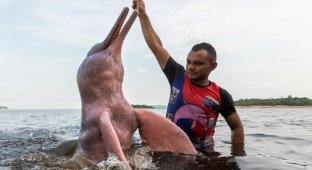Top 5 mammals by diving depth. Winner - 3 km down! (8 photos)
How deep to the bottom can a person sink? We're not talking about illegal substances and depraved lives: we're talking literally about the bottom of the sea!
The world record for freediving - diving without scuba gear and other gadgets - was set by the Austrian Herbert Nitzsch: 253 meters.
What about other mammals? Who among the animals takes first place in descending to the bottom? 
Alas, the record dive was not without consequences. While rising from the depths, the diver developed decompression sickness. After surfacing, he underwent a long rehabilitation.
5. Dolphins 
We focus more on high jumps rather than depth jumps.
The top 5 are opened by dolphins. We register their records based on the indicators of the two most recognizable and widespread species - the bottlenose dolphin and the common dolphin.
According to official data, in the wild they descend to depths of over 200 meters. Yes, almost like Nietzsche! Only without harm to health.
A streamlined body shape, a slow heartbeat and the ability to hold their breath for 15-20 minutes help them sink to the bottom.
But since the animals spend most of their time in shallow water, they do not have any special diving devices.
4. Weddell seal. 
Hello! Dive with us to the bottom of procrastination and doing nothing!
The fourth place is the Weddell seal.
His record is 600 meters deep and a whole hour spent under water.
These animals are quite widespread off the coast of Antarctica and are considered the main predators of these waters.
A thick layer of fat, a large volume of blood and a high concentration of iron in it help them conquer the depths of the sea.
Iron helps transport oxygen to all cells of the body.
The more iron, the greater the animal’s oxygen supply at depth and the better its diving ability.
3. Bottlenose whales, killer whales 
What are you staring at? The bottom can be not only the sea!
Third place is occupied by bottlenose whales, killer whales and some other middling cetaceans.
They have not yet learned how to conquer record depths, but have already mastered diving to 1000-1400 meters.
This is enough to catch all the yummy food without any extra equipment.
To dive a kilometer, they use the same features as a seal: a larger volume of blood, an increased concentration of iron, a streamlined body shape, subcutaneous fat.
But the size of cetaceans is much more impressive than that of a seal. That is why their immersion depth is greater.
2. Sperm whales and southern elephant seals 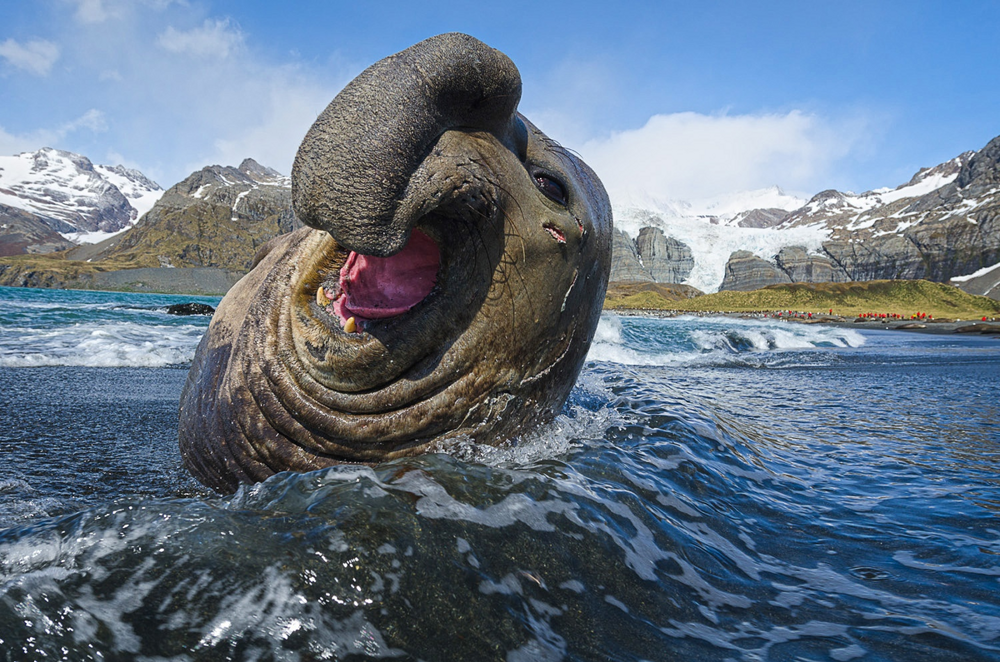
Deep-sea diving is especially important for male elephant seals. To be competitive during the breeding season, guys need to eat well. And at the bottom there is just a lot of nutritious food.
The honorable second place in our deep-sea race is rightly shared by sperm whales and southern elephant seals. 2200 meters for whales and 2388 meters for proboscideans! These animals display a much more extensive list of diving gadgets than all of the above species combined.
Once - an even larger volume of blood in the sperm whale and special sinuses in the abdominal cavity for storing blood in elephant seals.
Two - an increased number of red blood cells (help carry oxygen) and myoglobin (creates a reserve supply of oxygen in the muscles).
Three - a strong slowdown in heart rate and metabolism. If on land the elephant seal’s heart beats, like ours: at a speed of 60-70 beats per minute, then at depth these indicators slow down to 10-30 beats. 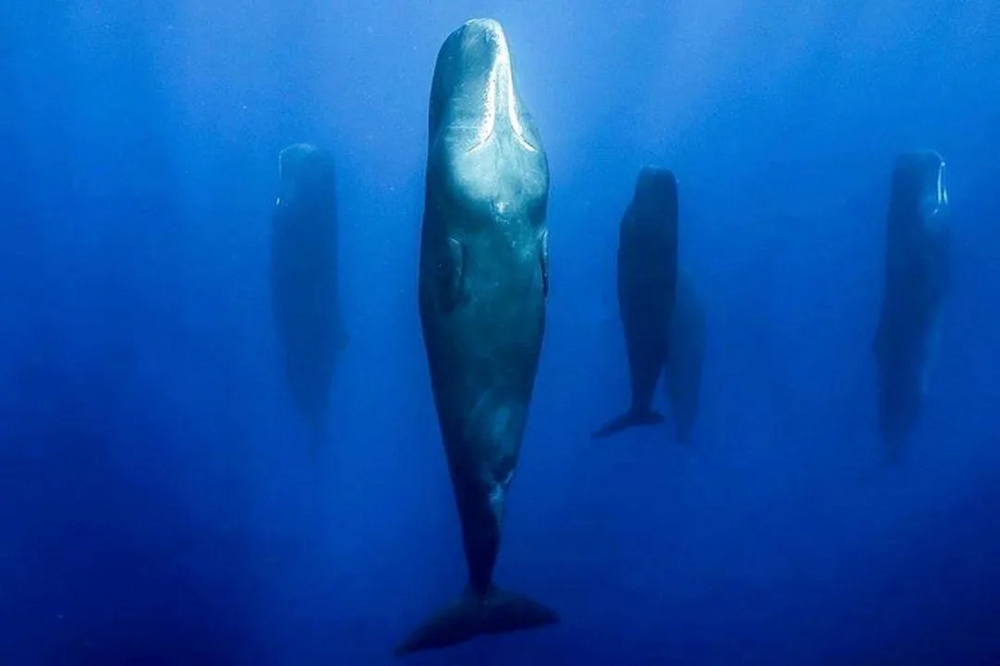
Thanks to its ability to hold its breath for a long time, the sperm whale is one of the few marine mammals capable of full sleep underwater. And they do it vertically!
Four - both sperm whales and elephant seals are able to redirect the main flow of blood to vital organs: the brain and heart. At the same time, blood flow to less useful parts of the body during immersion, such as skin and fat, slows down.
A bonus for sperm whales is the special composition of their blood plasma, which immediately dissolves the nitrogen that gets into it. Nitrogen causes decompression sickness - when blood foams during the ascent to the surface, destroying the walls of theentrances and blood vessels. 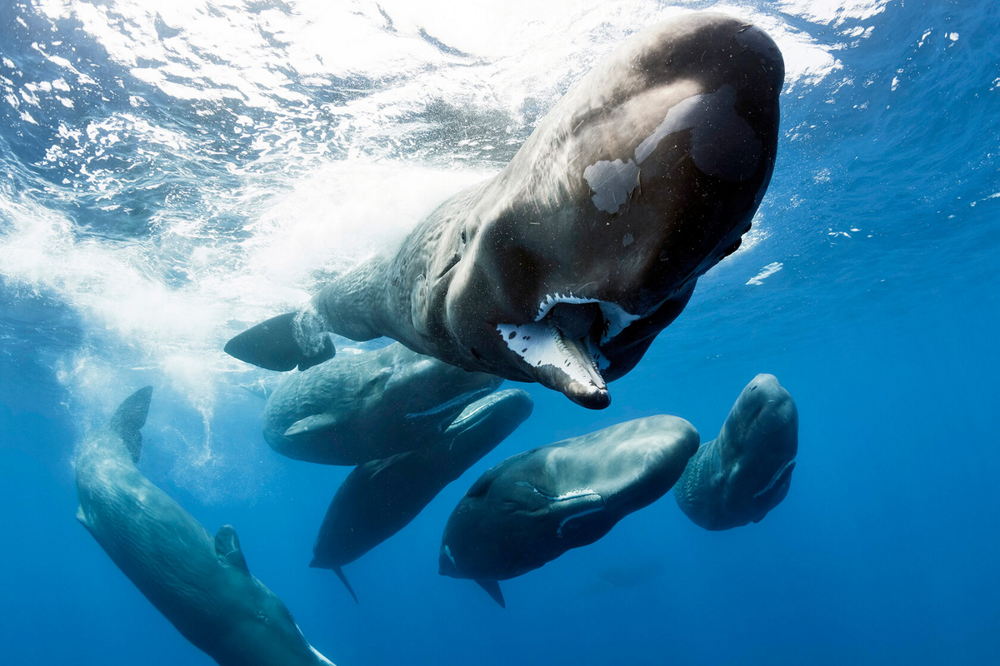
I only approve of foam in the bath.
1. Cuvier's beaked whales 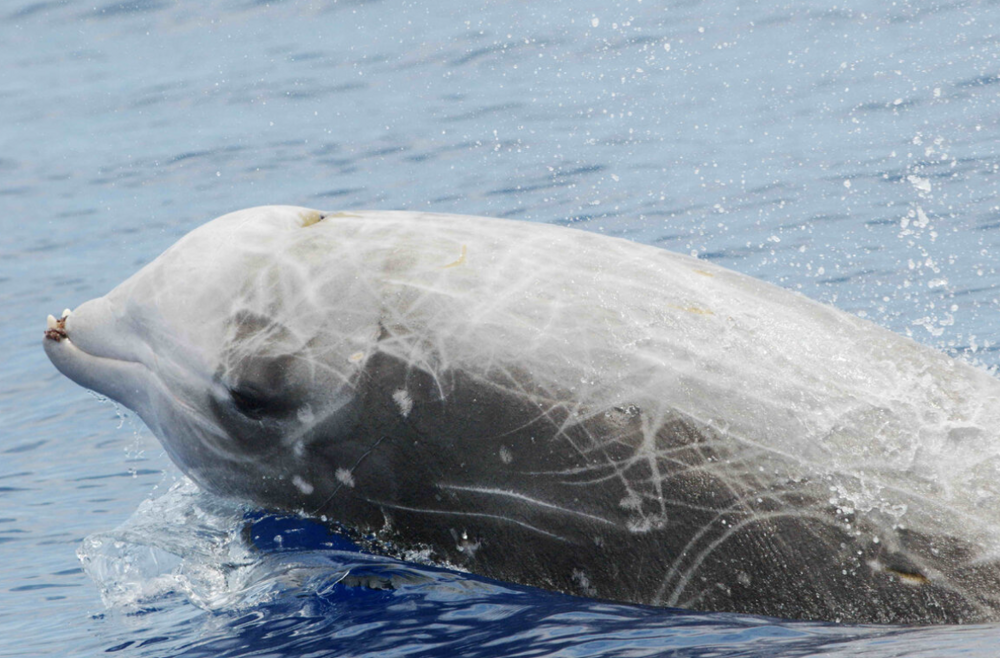
This animal definitely looks like it regularly dips to and from the bottom.
And finally, the first place in diving skill is occupied by... Cuvier's beaked whales!
These guys break two records at once among all mammals: for the depth of their dives and for the amount of time under water.
Just imagine: 2992 meters and 222 minutes without air!
The animals were able to achieve such results by perfecting all the abilities of elephant seals and sperm whales - beaked whales do not use fundamentally new gadgets.
But they don’t need to, they are certainly good anyway! And what are they looking for there? At such a depth there is no longer much life.













